India
Defense News ,India :- In a significant development supporting the Make in India initiative and bolstering the strength of the Indian Army stationed along international borders, the Defence Research and Development Organisation (DRDO) achieved a successful test of a robotic mounted artillery system at the Pokhran firing range in Jaisalmer, Rajasthan.The DRDO tested the 155×52 Advanced Towed Artillery Gun System (ATAGS) on BEML armored truck in the Jaisalmer district, near the India-Pakistan border. This innovative system is capable of delivering a strong response to enemy forces. The test, conducted in the presence of DRDO officials and Indian Army officers and soldiers, was deemed a complete success.Prepared and tested in mission mode by the DRDO, this event marks a milestone in the modernization of the Indian Army artillery. The mounted gun system demonstrated its capability to fire 5 rounds in just 60 seconds, showcasing its efficiency in combat situations.The key advantage of deploying this type of gun on a vehicle lies in its ability to determine the location of enemy artillery through the elevation of its rounds during firing. This enables quick detection and destruction of enemy targets, while the system can swiftly change its position post-firing to evade potential counterattacks.This robotic artillery system is part of the ongoing efforts by the Indian government to strengthen the army. The allocation of a significant portion of the national budget for the procurement and manufacturing of weapons and equipment for the Indian Army, Navy, and Air Force underscores the commitment to maintaining readiness for any future challenges.The Pokhran Field Firing Range in Jaisalmer serves as a crucial testing ground where the Indian Army and DRDO assess various domestically manufactured equipment and weapons. This proactive approach ensures that the armed forces are well-equipped to handle diverse scenarios in the times ahead.
Read More → Posted on 2024-01-07 04:57:59Space & Technology
Technology News ,India :- The Department of Atomic Energy in India is devising a strategy to convert two experimental reactors into pilot plants for generating nuclear-powered green hydrogen. One of these reactors, the Indian High-Temperature Reactor (IHRT), created by the Bhabha Atomic Research Centre in the mid-2000s, was initially designed for hydrogen production through a thermochemical process, utilizing heat to split water into hydrogen and oxygen. The IHRT was engineered to produce 7,000 kg of hydrogen, 18 MWh (thermal) of energy per hour, and 9 million liters of desalinated water daily.Presented at a conference in Oarai, Japan, on April 16, 2007, BARC scientists I V Dulera and R K Sinha described the IHTR as a 600 MW (thermal) reactor capable of generating 1,000 degrees Celsius of heat.The second reactor under modification is the 40 MW (thermal) Fast Breeder Test Reactor (FBTR) of the Indira Gandhi Center for Atomic Research (IGCAR). Originally established to gain operational insights into fast breeder reactors, the FBTR is now being adapted for green hydrogen production. Notably, the knowledge gained from FBTR operations is contributing to the development of the 500 MW "prototype fast breeder reactor" (PFBR) near Chennai, expected to be operational in 2024 after over two decades of construction.Simultaneously, IGCAR is focusing on the development of a 100 MW "small modular reactor" (SMR). This aligns with the global trend of exploring SMRs for decentralized electricity generation. SMRs can be conveniently located on the premises of retired thermal power plants, leveraging existing infrastructure for power evacuation and materials movement.The Indian government is actively promoting SMRs, and discussions at various energy conferences include the potential configuration of IHRT and FBTR as SMRs. This transformative initiative underscores India commitment to sustainable energy practices and signifies a noteworthy step towards harnessing nuclear power for the production of green hydrogen.
Read More → Posted on 2024-01-07 04:52:47World
Defense News ,South & North Korea :- In a concerning turn of events, North Korea has once again heightened tensions with South Korea by firing more than 60 artillery rounds near a disputed maritime border on Saturday. This follows a similar provocation on Friday when over 200 artillery rounds were launched in the same region.The targeted area is the northwest of Yeonpyeong Island, and the artillery barrage occurred between 1600-1700 Saturday KST (0700-0800 GMT), as reported by South Korea Joint Chiefs of Staff in a statement.Expressing their strong concern, the Joint Chiefs of Staff have issued a stern warning to North Korea, urging them to cease activities that pose a threat to peace on the Korean Peninsula and only serve to further escalate tensions between the two nations.As the situation unfolds, the international community watches closely, hoping for a peaceful resolution to this escalating crisis in the Korean Peninsula.
Read More → Posted on 2024-01-06 15:28:27World
Defense News ,Russia :- In a recent announcement, Russia has set forth an ambitious plan to dramatically increase its drone production, aiming to manufacture over 32,000 drones each year by 2030. First Deputy Prime Minister Andrei Belousov revealed this vision, emphasizing that domestic producers should dominate 70% of the market, as reported by the TASS news agency.The surge in drone production is a strategic response to the evolving dynamics in military conflicts, particularly evident in the ongoing war since Russia invasion of Ukraine in February 2022. Both Moscow and Kyiv have significantly heightened their military production efforts as the conflict persists.Belousov outlined the plan, stating, "The annual production volume of unmanned aerial vehicles (UAVs), excluding educational UAVs, is planned at 32,500 units. This represents nearly three times the current production volumes. Simultaneously, the goal is for Russian UAVs to claim a substantial 70% share in the UAV market."To fund this national project on UAVs, Russia has allocated a substantial budget of 696 billion roubles ($7.66 billion) by the year 2030. Further details regarding the financial aspects and project specifics will be disclosed later this month.In recent times, Moscow has increasingly utilized cost-effective Iranian-made Shahed drones, known for their noisy petrol engines, in aerial assaults on Ukrainian infrastructure situated far beyond the war front lines in the eastern and southern regions of the country.Notably, Russian drones initially posed challenges for Ukrainian air defenses due to their elusive nature compared to missiles. The use of expensive air defense missiles to shoot down these relatively inexpensive drones was not a financially viable strategy, prompting a shift in military tactics.President Vladimir Putin had already hinted at the versatility of UAVs, suggesting their applicability across various industries, not limited to the military domain.Ukraine, on the other hand, has adopted a pragmatic approach by intensively utilizing FPV drones – originally designed for personal civilian use but modified for battlefield purposes. This cost-effective tactic, primarily focused on reconnaissance and attacks, has proven successful and has been emulated by Russia.In response to Russia drone production surge, Ukraine has announced its own plans to produce more than 11,000 medium- and long-range attack drones in 2024, along with one million FPV (first-person-view) drones. These drones are in high demand on the front lines due to their affordability and effectiveness in military operations.
Read More → Posted on 2024-01-06 15:22:25Space & Technology
Space News ,India :- The Indian Space Research Organisation (ISRO) has achieved a major milestone by successfully testing cutting-edge fuel cells designed for potential use in India upcoming space station. The recently tested 100 W class Polymer Electrolyte Membrane (PEM) Fuel Cell demonstrated its prowess on the PSLV-C58 orbital platform, POEM3, in space. This breakthrough technology is poised to transform power generation in space habitats, providing an efficient and sustainable solution for future space missions.Conducted by ISRO Vikram Sarabhai Space Centre (VSSC), the test aimed to evaluate the performance of PEM Fuel Cells in the unique conditions of space and gather crucial data for designing systems for upcoming space endeavors.During the experiment, the fuel cell showcased its capability by generating an impressive 180 W of power using hydrogen and oxygen gases stored in high-pressure vessels aboard POEM. This success not only provided invaluable insights into the performance of various static and dynamic systems within the power system but also shed light on the underlying physics involved.PEM Fuel Cells operate on the principle of converting chemical energy from hydrogen and oxygen directly into electricity through electrochemical reactions, akin to batteries but without combustion. This direct conversion process makes them exceptionally efficient. Furthermore, as the sole byproduct is water, these fuel cells offer an emission-free power source, making them ideal for manned space missions where electricity, potable water, and heat are essential.The societal implications of this breakthrough technology are extensive. Fuel Cells are not only set to revolutionize the automotive industry by potentially replacing traditional engines but also hold promise for standby power systems, marking a significant step towards clean transportation and energy solutions.ISRO successful deployment of the PEM Fuel Cell on POEM3 signifies a crucial milestone in space exploration. As the agency looks ahead to the development of the Bhartiya Space Station, this fuel cell technology could be the key component paving the way for the future of orbital laboratories, reducing costs, and minimizing dependence on foreign sources.
Read More → Posted on 2024-01-06 15:16:26Space & Technology
Space News ,India :- In a historic achievement, the Indian Space Research Organisation (ISRO) orchestrated a pivotal maneuver on Saturday, successfully positioning the Aditya-L1 spacecraft, the nation inaugural space-based solar observatory, into its designated orbit at Lagrange Point 1, situated approximately 15 lakh kilometers away from Earth.Prime Minister Narendra Modi was the first to share the groundbreaking news online, as ISRO maintained its characteristic silence on social media and mainstream platforms, leaving the eager audience without live updates. CNN News-18, however, took the lead by broadcasting a live show, ensuring viewers were informed of the mission success – a commendable effort by the news network.Understanding Lagrange Point 1:Lagrange Point 1, also known as L1 point, is one of five equilibrium positions in the Earth-Sun system. Positioned between the Earth and the Sun, about 15 lakh kilometers away from Earth, L1 experiences gravitational forces from both celestial bodies that counteract the centrifugal force, providing a stable position for objects.ISRO Strategic Choice for Aditya-L1:ISRO strategically placed Aditya-L1 at Lagrange Point 1 due to the unique stability offered by this position in the Earth-Sun system. The gravitational forces at L1 create a stable environment, making it an ideal location for scientific observations and space missions. Aditya-L1, free from eclipses, is poised to unravel solar mysteries with unprecedented clarity.The Aditya-L1 mission aims to achieve several scientific objectives:1. Study the dynamics of the solar upper atmosphere, including the chromosphere and corona.2. Investigate chromospheric and coronal heating, physics of partially ionized plasma, coronal mass ejections, and flares.3. Observe in-situ particle and plasma environments for the study of solar wind dynamics.4. Explore the physics of the solar corona and its heating mechanism.5. Diagnose the plasma in coronal loops, measuring temperature, velocity, and density.6. Examine the development, dynamics, and origin of coronal mass ejections (CMEs).7. Identify processes leading to solar eruptive events at multiple layers (chromosphere, base, and extended corona).8. Map magnetic field topology and measure magnetic fields in the solar corona.9. Investigate the drivers for space weather, including the origin, composition, and dynamics of solar wind.Aditya-L1 127-Day Journey into Space: A Detailed TimelineThe journey began on September 2 with the successful launch of PSLV-C57, placing Aditya-L1 precisely into its intended orbit. Subsequent milestones include Earth-bound maneuvers, trajectory corrections, and operational readiness of various scientific payloads, culminating in the complex maneuver on January 6, where ISRO inserted Aditya-L1 into a halo orbit around Lagrange Point 1. Today, Aditya-L1 stands ready to revolutionize our understanding of the Sun from its unique vantage point in space.
Read More → Posted on 2024-01-06 15:07:55Space & Technology
Technology News ,Medical Science :- Scientists have found a brand-new kind of antibiotic that seems to be effective against one of the three bacteria that pose a major threat to human health due to their high drug resistance. This breakthrough involves a drug called Zosurabalpin, which successfully fought against Carbapenem-resistant Acinetobacter baumannii (Crab) in mouse models of pneumonia and sepsis. Crab is categorized as a top-priority pathogen by the World Health Organization, alongside two other drug-resistant bacteria.Dr. Andrew Edwards from Imperial College London, not involved in the study, emphasized the significance of this discovery. Crab causes infections in hospitals, especially in ventilator-dependent individuals. Its resistance to multiple antibiotics makes treatment challenging. Developing new treatments against Crab has been tough, but Zosurabalpin shows promise by overcoming the bacterium outer cell layer barrier.Antibiotic-resistant infections, especially those caused by Gram-negative bacteria, are a pressing threat to human health. Gram-negative bacteria have an outer shell with lipopolysaccharide (LPS), protecting them from antibiotics and immune system attacks. Roche Pharma Research and Early Development in Switzerland created Zosurabalpin, a drug identified for blocking A baumannii growth. Through experiments at Harvard University, researchers discovered that the drug prevents LPS transport, effectively killing the bacterium.While Zosurabalpin alone won"t completely solve the problem of antibiotic-resistant infections, it opens doors for future efforts targeting similar transport systems in other bacteria. Another antibiotic in development, murepavadin, also targets LPS transport but through a different mechanism, potentially expanding the approach to combat other antibiotic-resistant bacteria.Despite these advancements, transitioning from animal studies to human trials can be challenging. Simultaneously, the UK science, innovation, and technology committee advocate exploring bacteriophages, viruses that kill bacteria, as an alternative to antibiotics. However, the development of phage therapies faces obstacles, requiring specific standards for clinical trials, which, in turn, depend on successful clinical trials. The committee suggests considering the establishment of a facility in the West Midlands to support the production of bacteriophages.
Read More → Posted on 2024-01-06 03:14:16World
Defense News ,Philippines :- The BrahMos missile, born out of collaboration between India and Russia, stands out as a versatile medium-range ramjet supersonic cruise missile. It boasts the ability to be launched from submarines, ships, aircraft, or land platforms, providing a wide array of tactical applications that benefit various branches of the armed forces.A key factor contributing to the BrahMos missile effectiveness is its remarkable supersonic speed, reaching Mach 2.8-3.0. This high velocity is crucial for operational success, as it minimizes the time available for a target to respond or intercept the missile. Consequently, this increases the likelihood of the missile evading enemy defenses and successfully reaching its intended target.The missile propulsion system plays a significant role in its design. It utilizes a two-stage propulsion system, starting with a solid propellant booster engine for initial acceleration. Once a certain speed is achieved, the liquid ramjet, constituting the second stage of propulsion, takes over, ensuring a sustained high-speed cruise. This combination of a solid booster and a liquid-fueled ramjet is pivotal in achieving and maintaining the missile supersonic speeds.Regarding targeting and navigation, the BrahMos missile incorporates an advanced guidance system featuring inertial navigation, radar guidance, and satellite navigation (GPS/GLONASS). This sophisticated guidance system enables precise targeting, crucial for both anti-ship and land-attack missions.The BrahMos missile noteworthy payload capacity allows it to carry a substantial warhead. When coupled with its precision and high speed, it becomes a formidable weapon capable of addressing a range of targets.Furthermore, the missile system undergoes continuous development and upgrades. Variants such as the BrahMos-ER (Extended Range) enhance the missile reach. Ongoing developments include the BrahMos-II, a hypersonic variant, and BrahMos-NG, a smaller version designed for deployment from various aircraft types.The decision by the Philippines to acquire the BrahMos system is a strategic response to regional security challenges, particularly addressing the escalating maritime assertiveness of neighboring states.
Read More → Posted on 2024-01-06 03:09:55Space & Technology
Technology News ,Google :- The DeepMind robotics team has introduced three groundbreaking advancements aimed at enhancing robots" decision-making abilities in various environments. These innovations are designed to make robots operate more efficiently, effectively, and safely. One notable improvement involves a data gathering system named AutoRT, which utilizes a visual language model (VLM) and a large language model (LLM) working together. This system enables robots to understand their surroundings, adapt to new settings, and determine suitable tasks.To ensure safety, DeepMind has implemented a "Robot Constitution," inspired by Isaac Asimov "Three Laws of Robotics." This set of safety-focused guidelines directs the LLM to avoid selecting tasks that involve humans, animals, sharp objects, and even electrical appliances. The robots are also equipped with a safety feature that automatically stops them if the force on their joints exceeds a certain threshold. Additionally, a physical kill switch is available for human operators to deactivate the robots, adding an extra layer of security.Over a seven-month period, Google deployed 53 AutoRT robots in four different office buildings, conducting over 77,000 trials. Some robots were controlled remotely by human operators, while others operated based on pre-programmed scripts or autonomously using Google Robotic Transformer (RT-2) AI learning model.In the trial, AutoRT VLM identified objects on a countertop, such as a sponge, cloth, a bag of chips, and a napkin. The LLM then suggested tasks like placing the napkin on the countertop and opening the bag of chips. AutoRT follows a systematic approach for each task, ensuring a logical and safe decision-making process.The robots used in the trial were practical in design, equipped with a camera, robot arm, and mobile base. DeepMind has also introduced two additional technologies. SARA-RT enhances the existing Robotic Transformer RT-2 with a more accurate and faster neural network architecture. RT-Trajectory incorporates 2D outlines to assist robots in performing specific physical tasks, such as wiping down a table.Although fully autonomous robots capable of serving drinks and fluffing pillows may still be in the distant future, these advancements pave the way for safer and more intelligent robotic systems, providing valuable lessons for future developments in the field.
Read More → Posted on 2024-01-06 03:04:59World
Defense News ,Pakistan :- In a recent announcement, Pakistan has unveiled plans to incorporate the FC-31 Gyrfalcon, a fifth-generation stealth fighter developed by China Shenyang Aircraft Corporation, into its air force in the near future. Air Chief Marshal Zaheer Ahmed Baber Sidhu disclosed this framework agreement during a ceremony introducing new military capabilities on January 2.The induction ceremony showcased various aircraft, including Beijing-manufactured J-10C Firebird jets and business-class planes. However, specific details regarding the quantity and timelines for the FC-31 procurement were not revealed by Sidhu or the Pakistan Air Force.A report from Defense News highlighted the air force silence in response to queries about the Gyrfalcon initiative potential impact on Islamabad pursuit of the Turkish-made Kaan fifth-generation fighter. Aerospace specialist Justin Bronk of London Royal United Services Institute expressed uncertainty about the consequences, stating, "The impact of a J-31/FC-31 acquisition by Pakistan is difficult to predict at this stage because the capabilities and time frames for delivery are so vaguely understood."Defense analyst and former Pakistan Air Force pilot Kaiser Tufail raised concerns about the downsides of Pakistan Gyrfalcon procurement. He emphasized that the induction of various fighter types poses challenges in terms of training and maintenance, and he pointed out the country grim economic scenario, suggesting a need for drastic spending cuts. Tufail proposed considering unmanned aerial vehicles (UAVs) to meet the requirement for stealthy platforms, particularly for tactical support operations over the battlefield.The article also touched upon the ongoing Pakistan-Turkey Fifth-Gen Aircraft Program, initiated in 2022 by the state-owned Pakistan Aeronautical Complex and Turkish Aerospace Industries. The collaborative effort aims to develop the TF-X fifth-generation jet, intended to replace existing Lockheed Martin platforms in both countries. The program aligns with Pakistan goal to have a fifth-generation fleet by 2047, with a TF-X prototype scheduled for 2023 and a maiden flight in 2026.
Read More → Posted on 2024-01-05 15:36:00World
Defense News ,Ukraine :- In a significant move to bolster the defense capabilities of Ukraine, the Czech Republic has delivered 26 advanced Dana M2 self-propelled artillery systems. This military enhancement, an upgraded version of the wheeled Dan-VZ77 gun, boasts a formidable 152mm caliber cannon and the capability to launch specialized shells with an impressive range of up to 25km.The Dana M2 artillery system stands out with its remarkable performance, reaching distances of 18.7 km with standard shells and extending to an impressive 25 km when utilizing rocket-assisted projectiles. Notably, it boasts a rapid-fire rate of up to 5 shots per minute, complemented by a magazine capacity of 50 rounds. Operating the Dana-M2 requires a dedicated crew of five individuals.Crafted on a robust Tatra 8×8 wheeled chassis, the Dana M2 is powered by a Tatra engine coupled with a 5-speed transmission. This configuration enables the self-propelled howitzer to achieve a top speed of 25km/h off-road and an impressive 90km/h on roadways.The initial integration of the Dana M2 self-propelled howitzers into the Ukrainian Armed Forces took place in April 2022. This strategic move was part of Ukraine plan to enhance the mobility of its artillery units, transitioning from traditional towed artillery to advanced self-propelled systems such as the domestically produced 2S22 Bogdana 155 mm artillery system. Notably, the decision to retain the Soviet-standard caliber was influenced by Ukraine existing ammunition stocks and production capabilities. This infusion of cutting-edge artillery systems represents a crucial step in fortifying Ukraine defense capabilities.
Read More → Posted on 2024-01-05 15:32:37World
Defense News ,Russia & North Korea :- In a recent announcement from the White House on Thursday, it was revealed that North Korea has supplied Russia with ballistic missiles and launchers, heightening concerns over the ongoing attacks on Ukraine. The National Security Council spokesman, John Kirby, disclosed that these Pyongyang-provided missiles, with a range of approximately 900 kilometers (550 miles), were utilized by Russia in two recent attacks within the past week.Kirby emphasized the significance of this development, stating, "Our information indicates that the Democratic People Republic of Korea recently provided Russia with ballistic missile launchers and several ballistic missiles. This is a significant and concerning escalation of the DPRK support for Russia."The revelation has sparked a call for urgent action from the United States Congress to pass a crucial package of military aid for Ukraine. Kirby stressed that without this aid, the support pipeline for Ukraine would soon run dry. He highlighted the immediate priority of bolstering air defenses for Ukraine, which has been subjected to relentless aerial attacks by Russia in recent days."Its critical that Congress meets this moment and responds by providing the Ukrainians what they need to defend themselves. The time for Congress to act is now," Kirby urged.According to Kirby, Russian forces launched at least one of the North Korean-supplied missiles on December 30, landing in an open field in the Zaporizhzhia region. Subsequently, Moscow forces initiated a mass aerial attack on January 2, firing "multiple" ballistic missiles into Ukraine.In response to this breach of UN sanctions against North Korea, the United States and its allies plan to raise the issue at the UN Security Council. Additionally, Russia is reportedly in talks with its ally Iran to purchase missiles, including close-range ballistic missiles.The announcement comes after the United States revealed in October that North Korea had delivered more than 1,000 containers of military equipment and munitions to Russia. This latest disclosure marks the first reported use of such arms.The connection between North Korea and Russia was brought to attention when North Korean leader Kim Jong Un visited Russia far east in September, meeting with President Vladimir Putin. This raised concerns among Kyiv allies about the potential for an arms deal. Putin, who initiated the invasion of Ukraine in February 2022, recently promised to intensify strikes on Ukraine after an unprecedented attack on the Russian city of Belgorod.In response to the heightened threat, Ukrainian President Volodymyr Zelensky, in his New Year address, vowed to unleash "wrath" against Russian forces in 2024, emphasizing the need for Western allies to expedite the delivery of air defense equipment, combat drones, and long-range missiles.
Read More → Posted on 2024-01-05 15:28:47World
Defense news ,North Korea :- In a recent incident, North Korea unleashed an artillery barrage near two South Korean islands, prompting an urgent response from Seoul defense ministry. This marked a significant military escalation in the region, reminiscent of the 2010 attack when the North fired shells at one of the same islands.The defense ministry in Seoul emphasized that the live firing, which involved "over 200 rounds" of artillery shells near Yeonpyeong and Baengnyeong islands, posed a direct threat to peace on the Korean Peninsula. In response, residents of both islands were ordered to evacuate, and ferry services were suspended. South Korea also planned a naval drill as a countermeasure.The ministry condemned North Korea actions, calling them a "provocative act" and reassured that there was no damage to the South Korean people and military. The shells landed north of the de facto maritime border known as the Northern Limit Line (NLL). Despite this, evacuation orders were issued as a preventative measure, heightening tensions in the region.The incident comes after repeated warnings from North Korea leader, Kim Jong Un, about the readiness for war against South Korea and the United States. The defense ministry, in close coordination with the United States, pledged to take appropriate measures to respond to North Korea provocations.The evacuation of residents from Yeonpyeong and Baengnyeong islands was described as a precautionary step ahead of a planned South Korean military drill. The nullification of a previous accord, which aimed to reduce tensions, has increased concerns about potential military clashes in the border areas.This military escalation follows the 2010 clash when North Korea bombarded Yeonpyeong island in response to a South Korean live-fire drill, resulting in casualties. The current relations between the two Koreas are strained, with Kim Jong Un solidifying the country nuclear status and warning of a nuclear attack on the South.In an effort to deter North Korea, Washington deployed strategic weapons, including a nuclear-powered submarine, and engaged in joint drills with Seoul and Tokyo. However, Pyongyang labeled these moves as "intentional nuclear war provocative moves."As tensions rise on the Korean Peninsula, the international community watches closely, concerned about the potential for further conflict and the destabilization of the region economy.
Read More → Posted on 2024-01-05 15:24:24India
Defense News ,India :- In a daring operation, the Indian naval warship INS Chennai successfully reached the troubled waters surrounding the hijacked vessel MV Lila Norfolk off the Somalia coast, as reported by news agency ANI citing military officials.Upon arrival, INS Chennai wasted no time, deploying its helicopter and sternly warning the pirates to abandon their illicit takeover of the vessel. The safety of at least 15 Indian crew members aboard the Liberian-flagged ship, hijacked near Somalia coast, has been ensured, with the elite Marine Commandos MARCOS standing ready for any necessary operations.The Indian Navy has been vigilantly monitoring the situation concerning the hijacked ship, MV LILA NORFOLK, since receiving information the previous evening. Communication has been established with the 15 Indian crew members, and the Navy is actively engaged in overseeing the ongoing developments.The alert came through the UKMTO portal, signaling a distressing boarding incident by approximately five or six armed individuals on Thursday evening. Responding promptly, the Indian Navy launched a Maritime Patrol Aircraft (MPA) and redirected INS Chennai to assist the beleaguered vessel, as reported by ANI.On Friday morning, INS Chennai soared over the vessel and successfully established contact, ensuring the safety of the crew. The overall situation is being meticulously monitored in collaboration with various agencies and Maritime Security Forces (MNFs) in the region, according to Indian Navy officials.This marks a testament to the swift and decisive action taken by the Indian Navy in protecting its citizens and upholding maritime security. The saga continues, with more updates expected to follow.
Read More → Posted on 2024-01-05 15:18:31Space & Technology
Space News ,China :- China has achieved a significant milestone in space exploration with the completion of the first launch pad at the Hainan Commercial Launch Site on December 29. This marks the initial step of a two-pad development, promising increased access to space for national and commercial purposes. The strategic location near the Wenchang spaceport in Hainan, surrounded by the South China Sea, positions it as a crucial hub for China space ambitions.The completed Pad 1 is dedicated to the Long March 8, a cutting-edge kerolox medium-lift rocket developed by the China Aerospace Science and Technology Corp. (CASC). This advancement not only facilitates a smoother launch process but also serves as a pivotal move away from older hypergolic rockets, reducing concerns about debris falling in inhabited areas.Anticipated to be operational in the first half of 2024, the new launch pad opens doors for diverse missions, including the Queqiao-2 lunar relay satellite launch – a prerequisite for the historic Chang e-6 lunar far side sample return mission.China burgeoning launch rate, growing from 22 launches in 2016 to an impressive 67 in 2023, underscores the need for enhanced facilities. The completion of Hainan new launch pad is a strategic response to this demand, providing vital support for the ambitious "Guowang" constellation project.CASC plans for a 13,000-satellite low Earth orbit broadband megaconstellation, colloquially referred to as China Starlink, further underscores the significance of the new launch pad. The mass production of Long March 8 rockets is intricately linked to the realization of this colossal satellite network.Notably, a second commercial launch pad is under construction, slated for completion by May of this year. This pad will host the "XLV" rocket developed by CASC Shanghai Academy of Spaceflight Technology, offering versatility by accommodating 19 different launch vehicles.The facilities at Hainan are expected to attract at least nine manufacturers, including CASC subsidiaries and commercial entities such as iSpace, CAS Space, and Deep Blue Aerospace. With the potential to launch several dozen or even over 100 satellites annually, the site strong launching capabilities are poised to lower costs, making satellite constellations more economically viable.As China continues its strides in space exploration, the completion of the Hainan Commercial Launch Site first pad is a testament to the nation commitment to advancing its space capabilities, fostering innovation, and propelling itself to new heights in the global space arena.
Read More → Posted on 2024-01-05 15:09:21World
Defense News ,Ukraine :- In a significant development on December 4, the German government announced the successful delivery of the first Skynex air defence system, along with ammunition, to bolster the Armed Forces of Ukraine.Back in December 2022, a substantial EUR 182 million contract was inked with the German defense giant Rheinmetall, securing two Skynex air defence systems for Ukraine. Anticipated in the coming months, the delivery of the second system will further strengthen the Ukrainian Armed Forces.The introduction of Skynex air defence systems is poised to elevate the Ukrainian army capability in countering a diverse range of airborne threats, including unmanned aerial systems, kamikaze drones, and low-flying cruise missiles.Skynex, characterized by its reliance on automatic cannon-based air defence, proves particularly effective in very short-range scenarios where guided missiles may fall short. The incorporation of programmable 35mm Ahead ammunition, an innovative creation by Rheinmetall, not only provides a cost-effective alternative to guided missile systems but also boasts enhanced effectiveness due to its immunity to electronic interference. This success is exemplified by the proven track record of the self-propelled Flakpanzer Gepard anti-aircraft system in Ukraine, showcasing the efficacy of 35mm gun-based air defence against aerial threats, notably cruise missiles and drones, according to Rheinmetall.
Read More → Posted on 2024-01-05 15:05:38World
Defense News ,Iran :- In a chilling revelation, the Islamic State has asserted responsibility for the tragic bombing attack in Kerman, Iran, where 84 lives were lost. The terror group made the claim through its official Telegram account, terming the assault a "dual martyrdom operation." The attackers, identified as Omar al-Mowahid and Sayefulla al-Mujahid, targeted a commemoration ceremony at the tomb of Major General Qassim Suleimani, who was assassinated four years ago in a U.S. drone attack.Contrary to initial speculations blaming Israel, the Islamic State declaration aligns with American intelligence assessments, suggesting their involvement in the attack. While some Iranian leaders initially pointed fingers at Israel, Western officials cast doubt on this theory, emphasizing Israel history of targeted operations against specific individuals or facilities.The modus operandi also contradicted initial Iranian reports, which claimed that remotely detonated bombs had been placed along the road to the cemetery. American officials believe the Islamic State motive was not to frame Israel but to seize an opportunity to strike a long-standing adversary. The group historical opposition to Iran, with its Shiite Islamic government, underscores a deep-rooted animosity.As Iran observed a national day of mourning, the death toll from the twin explosions was revised to 84, down from the initial count of 103. The interior minister, Ahmad Vahidi, expressed concern that the toll might rise due to the critical condition of some of the injured. A total of 284 people were wounded in the attack, with 220 still hospitalized in Kerman.The bombings occurred at a delicate moment in the volatile West Asian region, coinciding with the fourth anniversary of General Suleimani death. The revered Iranian military and security leader holds significance for many Iranians, particularly those supportive of the government.
Read More → Posted on 2024-01-05 14:36:31World
Defense News ,Russia :- In a significant development, the Russian Armed Forces have recently received an upgraded version of the KUB-BLA loitering munition, equipped with a more potent warhead. This modification addresses the limitations of its predecessor, the Zala Aero drone, which featured a relatively small three-kilogram fragmentation warhead, restricting its effectiveness against certain targets.The enhanced version of the loitering munition now boasts an OFBCh-2.5 warhead, incorporating an HMX-based explosive with a yield 1.7 times that of TNT. Kalashnikov president Alan Lushnikov highlighted the success of recent tests and revealed that the first batch is currently being shipped to the customer. This marks a significant advancement, as it essentially introduces a new product to the arsenal.Known as the "Silent Assassin," this catapult-launched drone operates on a battery-run electric motor, enabling a flight speed of up to 130 kilometers (81 miles) per hour and an endurance of 30 minutes. Its design focuses on stealth, allowing it to approach targets silently by slipping under enemy radar with its low-noise electric motor.Despite its impressive features, the drone lacks electro-optical sensors, preventing it from autonomously adjusting its flight path. Nonetheless, its strategic significance became evident during the ongoing Ukraine war, where Russian special and airborne forces extensively deployed it for tactical reconnaissance strikes.A tactical reconnaissance strike involves pairing the drone with a loitering munition for real-time detection and striking of enemy targets. The delta-wing drone deployment in Ukraine prompted the Russian defense industrial complex to double production in response to heightened war demands. Ongoing efforts are aimed at further improving its range, lethality, and navigation capabilities, according to Lushnikov. This upgraded loitering munition represents a notable step forward for the Russian military in enhancing its capabilities on the battlefield.
Read More → Posted on 2024-01-05 14:32:24World
Defense News ,Russia & Ukraine War :- In a swift response to Moscow announcement of deploying an advanced Yastreb-AV counter-battery radar in Ukraine, the Ukrainian military successfully destroyed the sophisticated system on the very day of its deployment. The Yastreb-AV, touted as the most modern radar system in Russia, employs a phased array antenna to pinpoint the exact coordinates of enemy artillery positions, aiding in counterattacks by friendly forces.Local reports described the radar as a significant asset, highlighting its capabilities in detecting the trajectory of incoming artillery fire. However, Ukraine Special Operations Forces managed to locate and neutralize the high-tech radar using a US-made High Mobility Artillery Rocket System (HIMARS). A video circulating online captured the alleged attack on the $250-million military radar.This recent achievement adds to Ukraine track record of thwarting Russian radar systems. In July 2023, the UK Ministry of Defence (MoD) reported that Ukrainian forces successfully destroyed a Russian Zoopark radar near the Russian Ground Forces area, leaving only a limited number of operational Zoopark units in the war-torn nation. The incident significantly contributed to a shortage of counter-battery radars in Russia, according to the UK MoD.One month later, the contested Kherson region witnessed the destruction of another rare Russian radar, Predel-E. Once again, a HIMARS rocket was credited for the attack, supported by a drone providing crucial aerial reconnaissance. These successive breakthroughs showcase the effectiveness of Ukrainian forces in countering and neutralizing advanced Russian radar systems, impacting Moscow strategic capabilities in the ongoing conflict.
Read More → Posted on 2024-01-05 14:27:32Space & Technology
Space News ,India ISRO :- India groundbreaking space mission, known as the "Celestial Surya Namaskar," is on the verge of reaching a pivotal moment as the Aditya-L1 satellite, the country first space-based solar observatory, prepares to settle into its designated orbit for the next five years. The Indian Space Research Organization (ISRO) has announced that the satellite is scheduled to reach its destination orbit on January 6 at 4 pm after a remarkable 126-day journey covering approximately 3.7 million kilometers since its launch on September 2 last year.Throughout its journey, Aditya-L1 has taken a circuitous route, showcasing its resilience and robust health, as confirmed by ISRO. The satellite has already begun beaming back captivating images of the Sun full disc, providing a glimpse into the scientific treasures it holds.Aditya-L1 celestial abode is a halo-shaped orbit positioned approximately 1.5 million kilometers away from Earth. Despite its proximity to the Sun, the orbit keeps the satellite significantly distant, considering the Sun vast distance of around 150 million kilometers from Earth.From its final observation point, the Lagrangian Point-1, the 1,475-kilogram Aditya-L1 satellite is poised to conduct a series of scientific experiments aimed at unraveling the mysteries of our solar system central star. Positioned strategically, it will offer an uninterrupted view of the Sun, aiding in understanding space weather dynamics. Nigar Shaji, the Project Director for Aditya-L1, highlighted its significance, stating that the observatory will serve as a forecasting and warning platform for solar storms.Solar storms, large-scale magnetic eruptions on the Sun, can impact the entire solar system. Aditya-L1 continuous monitoring capability positions it as a crucial tool for issuing warnings about potential solar electromagnetic effects on Earth. This capability is vital for safeguarding India extensive space assets, which include over 50 operational satellites valued at more than ₹50,000 crores.S Somanath, Chairman of ISRO, emphasized Aditya-L1 role as a space-based protector, safeguarding against solar flares and ensuing solar storms. The intelligent satellite, as described by astrophysicist Prof Somak Raychaudhury, will remain vigilant, ensuring continuous surveillance of Earth nearest star.The solar mission key highlights include Aditya-L1 successful injection into an elliptical orbit around Earth, its unique halo orbit around the Sun-Earth Lagrangian point, and its stable position at the Lagrange Point, where gravitational forces between the Earth and the Sun reach equilibrium. The satellite is armed with seven indigenously developed scientific payloads, designed to observe various layers of the Sun using electromagnetic particle and magnetic field detectors.As India Aditya-L1 satellite embarks on this unprecedented journey, scientists eagerly anticipate gaining valuable insights into the Sun behavior and contributing to our understanding of space phenomena.
Read More → Posted on 2024-01-05 14:20:44Search
Top Trending
-
 Agneepath Scheme replaced with Sainik Samman Scheme 2024, Defence Minister Rajnath Singh Relaunched Agniveer Scheme
Agneepath Scheme replaced with Sainik Samman Scheme 2024, Defence Minister Rajnath Singh Relaunched Agniveer Scheme
-
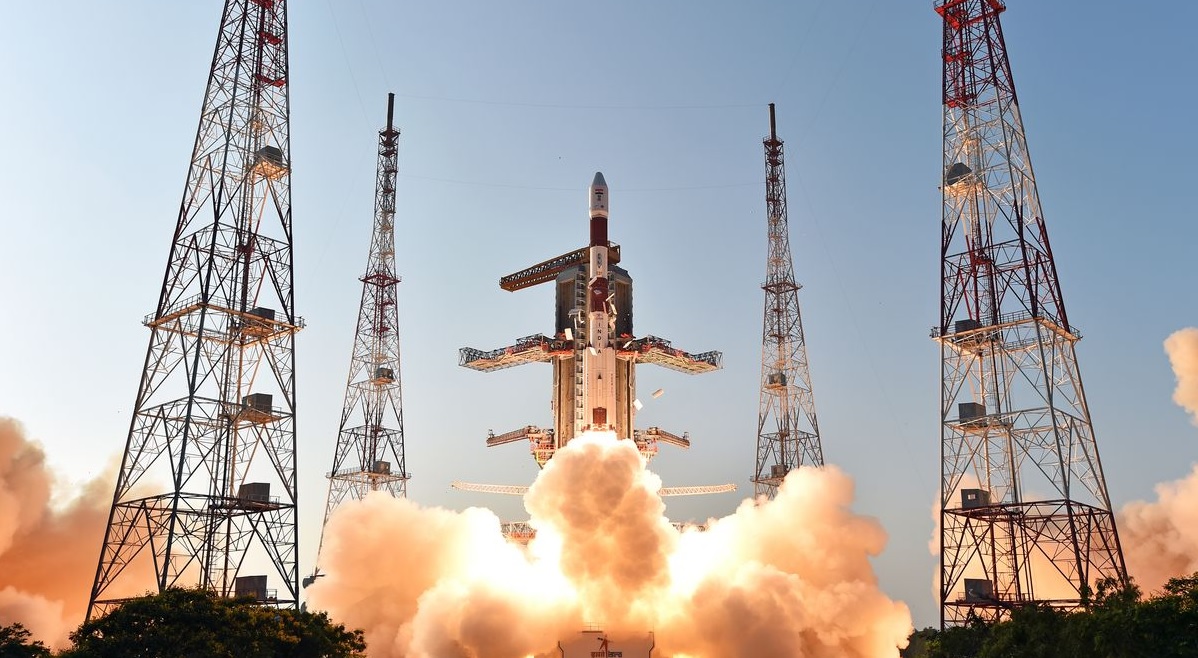 Isro Draws up Ambitious Plan for 2024, says will Launch at Least 12 Missions
Isro Draws up Ambitious Plan for 2024, says will Launch at Least 12 Missions
-
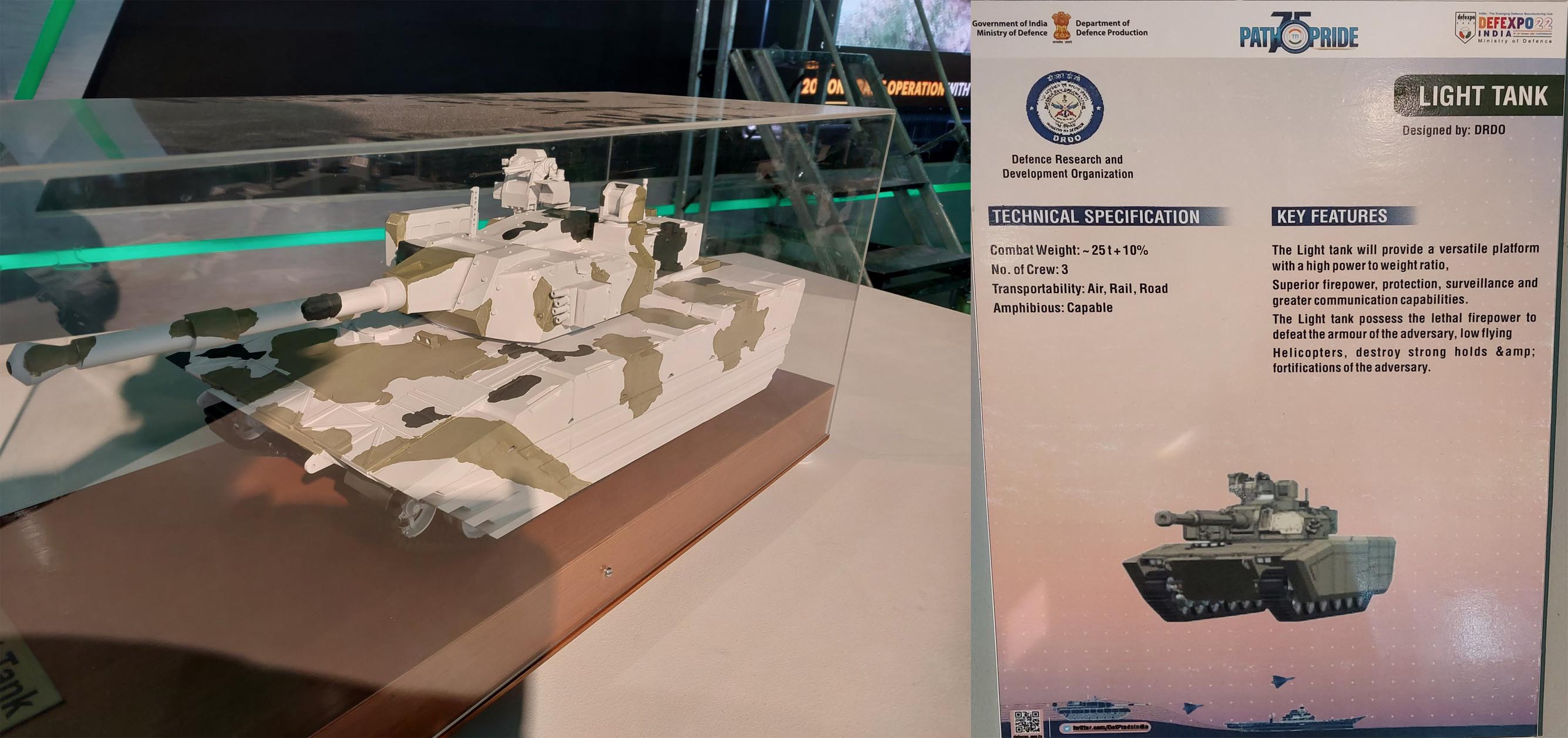 German Engines Available Now But India Chooses American Power Plants for Entire Zorawar Light Tank Project
German Engines Available Now But India Chooses American Power Plants for Entire Zorawar Light Tank Project
-
 Rolls-Royce Unveils a concept Nuclear Reactor that could one day Power a Colony on the Moon
Rolls-Royce Unveils a concept Nuclear Reactor that could one day Power a Colony on the Moon
-
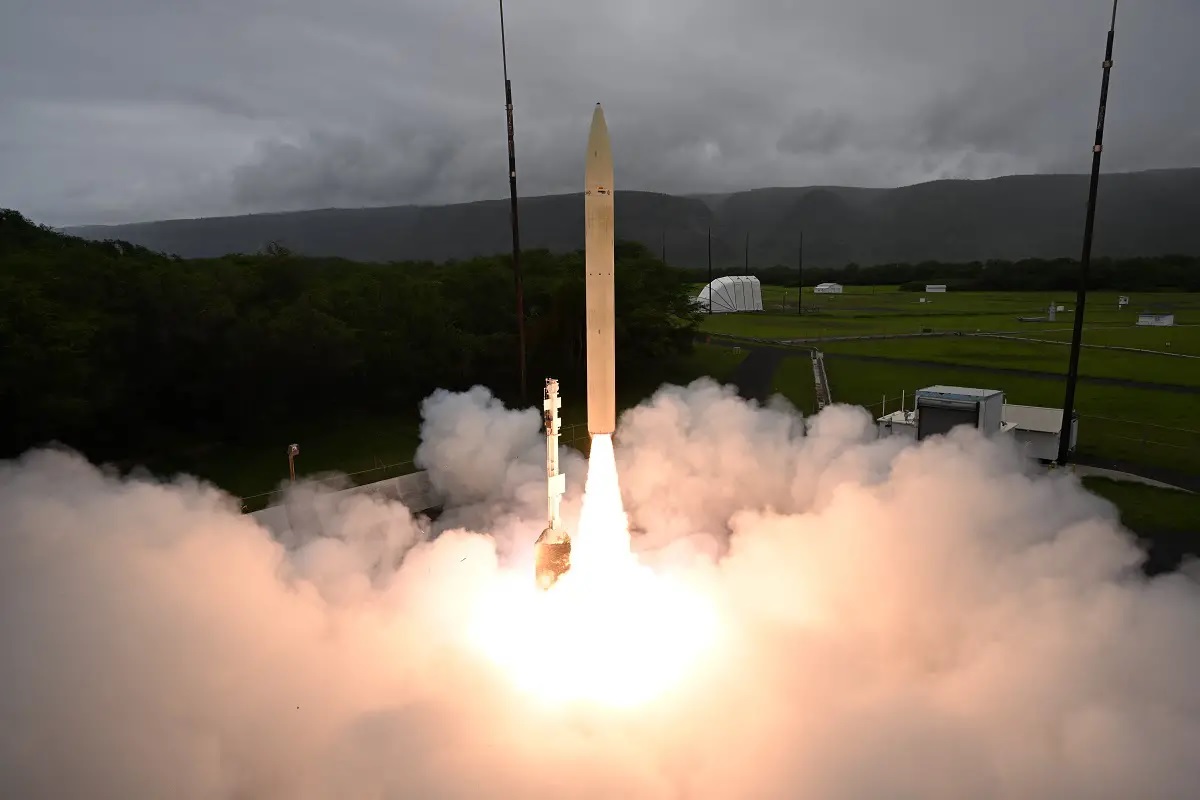 Successful Hypersonic Missile Test by U.S. Department of Defense
Successful Hypersonic Missile Test by U.S. Department of Defense
-
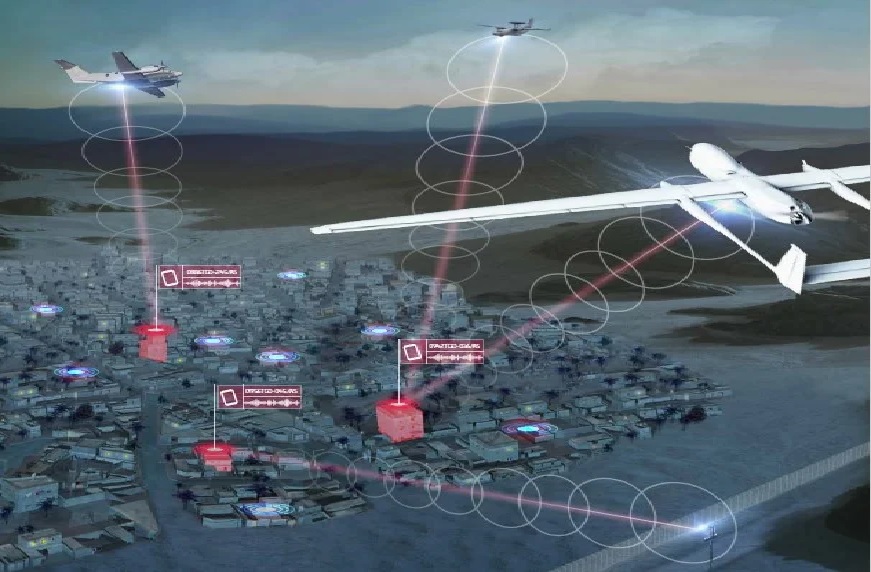 IAI's CellDart System Secures Contract for Airborne Cellular Intelligence Solution
IAI's CellDart System Secures Contract for Airborne Cellular Intelligence Solution
-
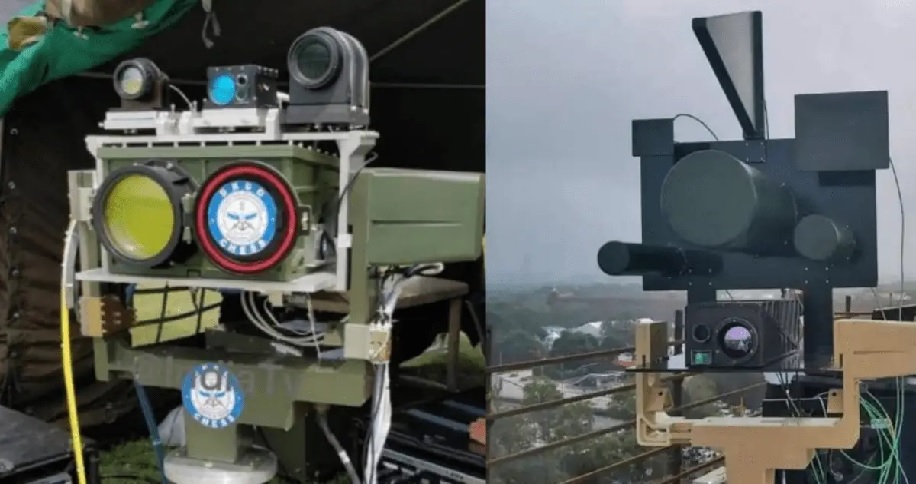 India to Deploy Indigenous Anti-Drone System to Combat Smuggling Activities Along Pakistan Border
India to Deploy Indigenous Anti-Drone System to Combat Smuggling Activities Along Pakistan Border
-
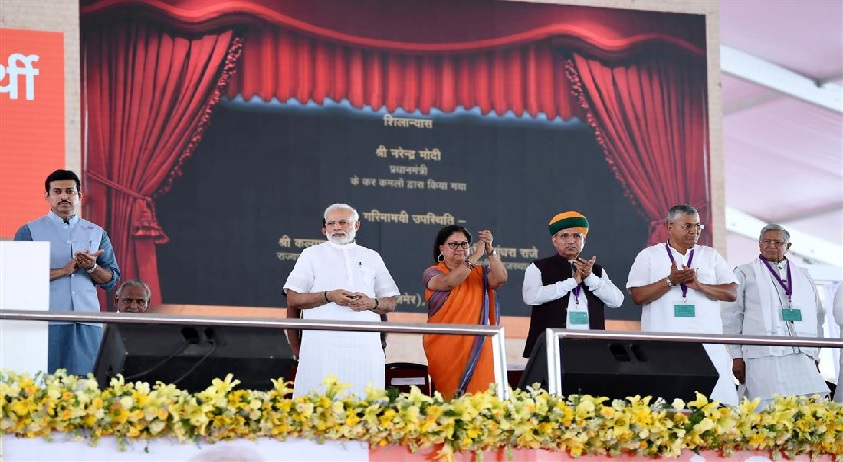 PM Modi Dedicates Rs 400 Crore Demonstration Fast Reactor Fuel Reprocessing Plant
PM Modi Dedicates Rs 400 Crore Demonstration Fast Reactor Fuel Reprocessing Plant
Top Trending in 4 Days
-
 DRDO's Phase-II Ballistic Missile Defence System Successfully Tested
DRDO's Phase-II Ballistic Missile Defence System Successfully Tested
-
 UGV Vision 60 Quadruped Robot in Indian Army
UGV Vision 60 Quadruped Robot in Indian Army
-
 BAE Systems Unveils Design for Tempest Fighter Jet: Future of Aerial Combat
BAE Systems Unveils Design for Tempest Fighter Jet: Future of Aerial Combat
-
 Indian Defence Ministry Allocates ₹1.72 Lakh Crore for Modern Weapon Systems Acquisition
Indian Defence Ministry Allocates ₹1.72 Lakh Crore for Modern Weapon Systems Acquisition
-
 Thales Secures GBP 176 Million Contract to Supply UK Armed Forces with Lightweight Multirole Missiles
Thales Secures GBP 176 Million Contract to Supply UK Armed Forces with Lightweight Multirole Missiles
-
 BAE Systems and Chess Dynamics Partner on Advanced Tridon Mk2 Air Defense System
BAE Systems and Chess Dynamics Partner on Advanced Tridon Mk2 Air Defense System
-
 MBDA Unveils New Effector Concept for Sky Warden Counter-Drone System at Farnborough
MBDA Unveils New Effector Concept for Sky Warden Counter-Drone System at Farnborough
-
 Tragic Saurya Airline Crash in Kathmandu: 18 Dead, Pilot Survives
Tragic Saurya Airline Crash in Kathmandu: 18 Dead, Pilot Survives



















